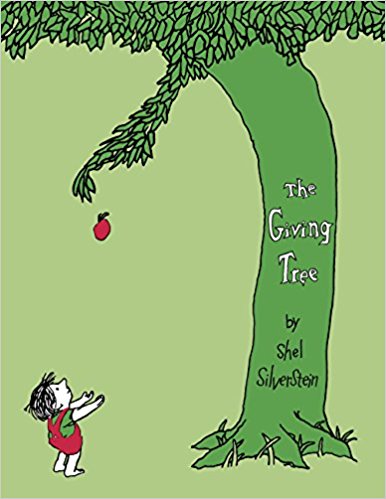The Giving Tree Summary
4 min read ⌚
 Well, the softness of this book made it a mark for critics and admirers alike to share their viewpoints.
Well, the softness of this book made it a mark for critics and admirers alike to share their viewpoints.
We don’t prefer the term “book” since we believe it is more of a story which tries to put a broader perspective of inter-relationships into the spotlight.
It is also embellished with illustrations which paint an accurate image of how the plot intensifies.
Who Should Read “The Giving Tree”? And Why?
Firstly published in 1964, “The Giving Tree” rose to prominence due to its original motives. It remained Silverstein’s best work which was translated into numerous languages.
With that being said, we without any equivocation endorse this story and recommend it to the wider audience despite the generational differences.
 About Shel Silverstein
About Shel Silverstein
Shel Silverstein was an American-born cartoonist, poet and a writer born at the height of the Great Depression in 1930.
His work will always remain etched into the hearts of his faithful audience.
“The Giving Tree PDF Summary”
When written, the book didn’t receive many admirations, since it was rejected due to various reasons. One editor at Simon & Schuster even claimed that the book is not cheerful for the kids, and simply not substantial for the grown-ups.
It wasn’t the flying start Shel had been hoping for.
Upon publishing, The Giving Tree received mixed recognitions, praises and often times – critics. Apparently, the main context had aroused controversy in terms of the interpretation of the storyline.
The narrative commences with a simple introduction of the main characters, but the emphasis falls on the relationship between a female tree and a boy.
The boy would come along and gather the leaves, make crowns and imagine of being a king of the dense forest. He would also play with the tree by climbing up and hanging on the branches.
The story continues by expressing the boy’s desires of eating the fruits (apples) from the tree. And when the boy got tired, he simply decided to rest in the shade.
Once the boy had its sleep, he would play hide-and-seek with the tree as they spend much of the time together.
The culmination of the plot rises to the surface as the boy grows older. The boy no more shares that innate desire to pick up leaves and eat apples; he is in need of things.
The tree gives him a proposition, to pick up the apples from the ground and those on the tree and sell them to make money.
And the boy started gathering the apples and putting them in a basket with an intention to sell them later.
The tree felt abandoned as the boy continued his routine.
One day, the tree asked the boy to climb up the trunk and swing a little bit, just like in the old days.
The boy replied that he is in need of a house to keep him warm. The tree allowed the boy to cut off some of the branches and build a beautiful house. And that will eventually make him happy.
So the boy did like he was told!
The next time the tree laid eyes upon the boy, it felt immense happiness. The boy, however, felt no urge to play with the tree and wanted a boat to sail away.
The tree told the boy to cut off its trunk and build a boat, that will make him happy. After a long time, the boy returned and saw the heartbroken tree with nothing left to give.
My apples are gone
My teeth are too weak for apples – said the boy
My branches are gone, you cannot swing on them
I am too old to swing on branches – said the boy.
My trunk is gone, you cannot climb
I am too tired to climb – said the boy.
I just want a place to sit and rest. The tree invited the boy to rest, and it was happy.
Key Lessons from “The Giving Tree”
1. The power of gratitude
2. Break out from the bubble of greed
3. Be careful what you wish for
The power of gratitude
Every now and then, people are not happy with the life they have, and they are in full pursuit for more. It is almost a global phenomenon that keeps us miserable for the entire life-span.
Some people have never once expressed glimpses of thankfulness, and that is why gratitude must emerge.
Break out from the bubble of greed
It comes as no surprise that is not easy to tackle that unquenchable hunger. We are taught that people must always struggle in order to battle through due to lack of money or status.
For precisely that reason, one must figure out a way to shift its mindset and adopt a more open approach.
Be careful what you wish for
Sometimes the things you crave so deeply, are the things that are going to bring you a lot of suffering. Take lottery-winners, for example; there are many suicidal cases which are a direct consequence of winning the lottery.
Stay with both feet on your ground and ponder about your decisions!
Like this summary? We’d Like to invite you to download our free 12 min app, for more amazing summaries and audiobooks.
Our Critical Review
We can say that this is one of the most thought-provoking and mindful stories we have ever bump into. It truly reflects people’s attitude toward life and unravels the exact causes leading to suffering.
It stands to reason why we believe it will benefit you regardless of your age or position.
Emir is the Head of Marketing at 12min. In his spare time, he loves to meditate and play soccer.


 About Shel Silverstein
About Shel Silverstein




